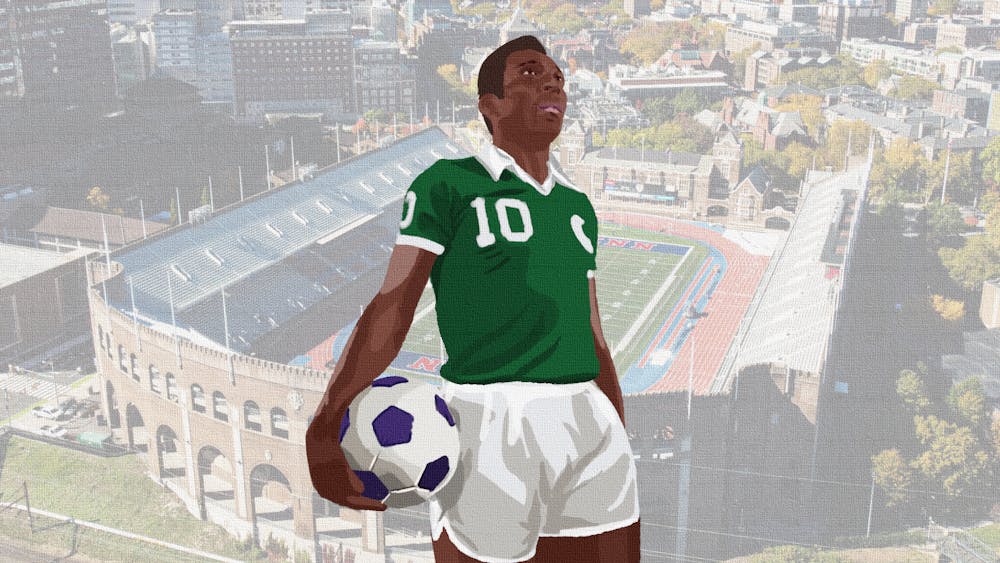It’s been nearly a month since the Brazilian soccer legend Edson Arantes do Nascimento, widely known as Pelé, passed away from colon cancer. Pelé was recognized as one of the greatest soccer players of all time, having won a record three World Cups with Brazil, and scoring a world record 1,279 goals in 1,363 matches with national and club teams throughout his youth and senior careers.
After spending the majority of his career with Santos FC in his native Brazil, Pelé decided to take his talents to the New York Cosmos of the recently founded semi-professional North American Soccer League in 1975 following a brief retirement. His mere presence instantly transformed the popularity of the league, as he was one of the biggest celebrities the United States had ever seen, while also bringing much more awareness and notoriety to soccer in American society. His move to the NASL inspired many other aging international stars to do the same, including Johan Cruyff, Franz Beckenbauer, and future Cosmos teammate Giorgio Chinaglia.
The forward scored 37 goals in just 64 matches in the NASL, from 1975-1977. During this stretch, Pelé scored his 1,250th goal, finding the back of the net at none other than Penn’s very own Franklin Field.
The Philadelphia Atoms were an NASL expansion franchise founded in 1973. After playing their first two seasons at the now-demolished Veterans Stadium, the Atoms began playing at Franklin Field in 1976. On July 10, 1976, the Cosmos made the trip down to Philadelphia where Pelé made his first, and only, appearance on Penn’s campus.
A few days before the match, Philadelphia was buzzing with excitement for the Brazilian star’s arrival. Soccer, at the time, was seen as a boring sport in the United States due to a lack of scoring and an excessive presence of ties, compared to basketball and football. Additionally, while the Flyers, Eagles, 76ers, and Phillies were the talk of the town, no one seemed to care much about the Atoms until Pelé visited. Before the game, however, he gave a press conference gem that might have swayed the minds of some Philadelphians about “the beautiful game.”
“Look at ice hockey … the scores are low and nobody complains about that,” Pelé said. “That's because the people who understand the game appreciate the defense and the efforts the players are making to do certain things. When more Americans learn what to watch — the defense, the footwork, the passing — they won’t complain that soccer scores are too low.”
Pelé’s arrival brought attention that residents had never seen for an Atoms game before. Traffic jams arose as fans attempted to enter the stadium, and a franchise-record 25,311 fans filled the seats of Franklin Field to catch a glimpse of Pelé’s greatness.
The game started off as well as it could’ve for the visitors. Playing in his 1,295th career match, Pelé received a pass from Chinaglia and headed it in during the fourth minute to make it 1-0 Cosmos. After the Atoms evened up the score 15 minutes later, Pelé found himself on the attack again. After his shot was deflected by Philadelphia goalkeeper René Vizcaíno, Terry Garbett punched it in to put New York up 2-1 — a lead that would hold until the final whistle for the victory.
RELATED:
Meet George Washington Woodruff, the winningest first-year coach in college football history
Stitz, Christoffersen of Penn men's soccer selected in MLS Draft
“The magic of Pelé can accomplish many things, as soccer fans have known since 1958,” longtime Philadelphia Inquirer staffer Don McKee wrote at the time. “Last night, the North American Soccer League’s traveling missionary brought his revival meeting to Philadelphia and managed several things not seen before in this city.”
While Pelé was complimentary of the Atoms after the game, even going so far as to guaranteeing improvement from them the following year, it didn’t come to fruition. The Atoms dissolved following the end of the 1976 season, while Pelé, after leading the Cosmos to a 1977 NASL title, called it a career soon after.
Pelé will surely be remembered for his impact on soccer across the world. He transformed Brazil to the global powerhouse it is today, and many fantastic footballers following his retirement credit him for serving as an idol and source of inspiration for them. But his impact on soccer in America cannot be overstated. While it still has never reached the popularity of football and basketball, with Pelé’s arrival, soccer truly arrived in the United States.









